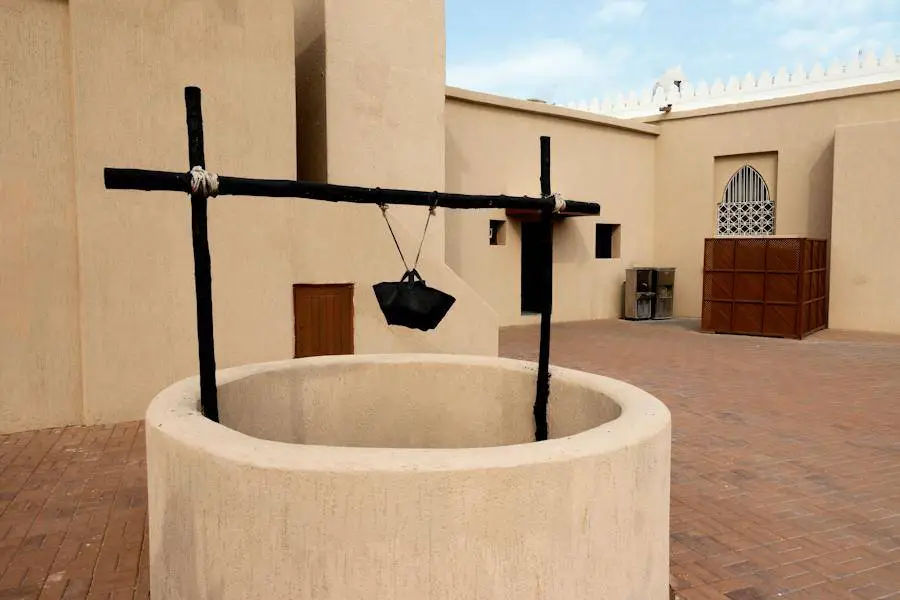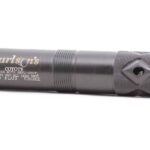Table of Contents
Understanding the depth of your well is crucial for optimal water usage and maintenance.

The depth can impact the water quality, the type of pump you need, and how your well interacts with local groundwater resources.
This article will explore different methods available for measuring well depth, providing step-by-step guides and important safety considerations.
Physical Measurement Method
The physical measurement method involves using a weighted line to measure the depth of your well. This method is straightforward but requires caution to avoid contamination or damage to the well.
Gathering Necessary Equipment
You’ll need a long, marked string or rope, a weight, a clean cloth, and gloves. The string or rope should be longer than the estimated depth of your well.
Procedure for Measuring With a Weighted Line
Attach the weight to the end of your string or rope. Lower it into the well until you feel it hit the bottom.
Mark the water level on the string with a waterproof marker and then measure the length of the string up to this mark.
Common Mistakes to Avoid
Ensure the weight and string are clean to avoid contaminating your well. Do not drop the weight or string into the well as retrieving them can be difficult or cause damage.
Interpreting the Results
The measured length of the string up to the water mark represents the depth of the water in the well.
To estimate the total depth of the well, you’ll need to know the static water level, typically provided in well logs or records.
Using Sound Waves
This method uses the principle of echolocation to determine well depth. It’s more complex than the physical method but can provide accurate results without the risk of contaminating the well.
Understanding the Science Behind Sound Waves
Sound waves can bounce back when they hit a surface. By timing how long it takes for a sound wave to return after being emitted, you can calculate the distance it traveled.
Procedure for Using Sound Waves to Determine Depth
You’ll need a sound-emitting device and a stopwatch. Drop a small, dense object into the well and time how long it takes for the sound of the impact to reach the surface.
You can then use the speed of sound in air (343 m/s) to calculate the depth.
Equipment Needed for This Method
A small, dense object like a pebble or bolt, and a stopwatch. Some people also use a sound recording device to capture the sound for more precise timing.
Interpreting the Results
Using the formula Distance = Speed x Time, you can calculate the depth of your well. Remember to convert your measurements to the same units before calculating.
Electronic Depth Finders

Electronic depth finders or sonar devices are often used in fishing but can also be used to measure well depth. They’re easy to use and very accurate but can be expensive.
How Electronic Depth Finders Work
Electronic depth finders emit sound waves and measure the time it takes for them to bounce back. The device then calculates the distance based on the speed of sound in water.
Using an Electronic Depth Finder: Step-by-Step Guide
Lower the transducer (the part of the device that emits and receives sound waves) into the well. The device will display the depth based on the time it took for the sound waves to return.
Pros and Cons of Electronic Depth Finders
These devices provide accurate results and are easy to use. However, they can be expensive and may not work well in wells with obstructions or irregularities.
Interpreting the Results
The device should display the depth directly. Ensure the device is calibrated correctly for the most accurate results.
Water Level Indicators
Water level indicators are special devices designed to measure the water level in wells, tanks, and other containers. They’re accurate, easy to use, and provide direct readings.
How Water Level Indicators Work
Water level indicators typically use a probe attached to a marked tape or cable. When the probe contacts water, it completes an electrical circuit, triggering a light or buzzer on the reel.
Using a Water Level Indicator: Step-by-Step Guide
Lower the probe into the well until the indicator shows it has hit the water. Note the reading on the tape or cable at the well’s top – this is your water level.
Pros and Cons of Water Level Indicators
These devices are accurate, easy to use, and designed specifically for measuring water levels. However, they can be expensive and only measure the water level, not the total well depth.
Interpreting the Results
The reading on the tape or cable when the probe hits the water is your well’s water level. To calculate the total well depth, you’ll need additional information about your well’s static water level.
Consulting Well Documentation

Your well’s original documentation and logs can provide valuable information about its depth. However, this information might be outdated if modifications have been made to the well since it was drilled.
How to Locate Well Records
You can usually obtain well records from the well drilling company, your local health department, or the Department of Water Resources.
Reading and Understanding Well Logs
Well logs include details about the well’s construction, including its depth, the materials used, and the depth of water during construction.
Estimating Well Depth from Records
Using the information in the well logs, you can estimate your well’s depth. However, remember that changes may have occurred since the well was drilled.
Limitations of Well Records
Well records provide a good starting point but may not reflect the well’s current condition. They won’t account for changes due to sediment buildup, damage, or other alterations.
Professional Services
If you’re uncomfortable measuring your well’s depth yourself, or if you want the most accurate results, consider hiring a professional.
When to Hire a Professional
If you’re unsure about the process, lack the necessary equipment, or have a particularly deep or complex well, it may be best to hire a professional.
What to Expect During a Professional Inspection
A professional will use specialized equipment to measure the well depth and water level. They can also inspect the well for damage, test the water quality, and provide maintenance recommendations.
Costs Associated with Professional Services
The cost of a professional well inspection depends on your location, the complexity of the job, and the company you hire. Always request an estimate before proceeding.
Look for a licensed, insured professional with good reviews and plenty of experience. They should be able to provide a detailed report after the inspection.
Conclusion
Understanding your well’s depth is crucial for its proper operation and maintenance. There are several methods available to measure well depth, each with its own advantages and disadvantages.
Whether you choose to use a physical measurement, sound waves, an electronic depth finder, a water level indicator, well documentation, or professional services largely depends on your specific circumstances and needs.
Remember, safety should always be your first priority when working with wells.
Regular maintenance and monitoring of your well can help ensure it continues to provide a reliable source of water for years to come.
With the information provided in this comprehensive guide, you now have the knowledge to measure the depth of your well accurately and safely.









